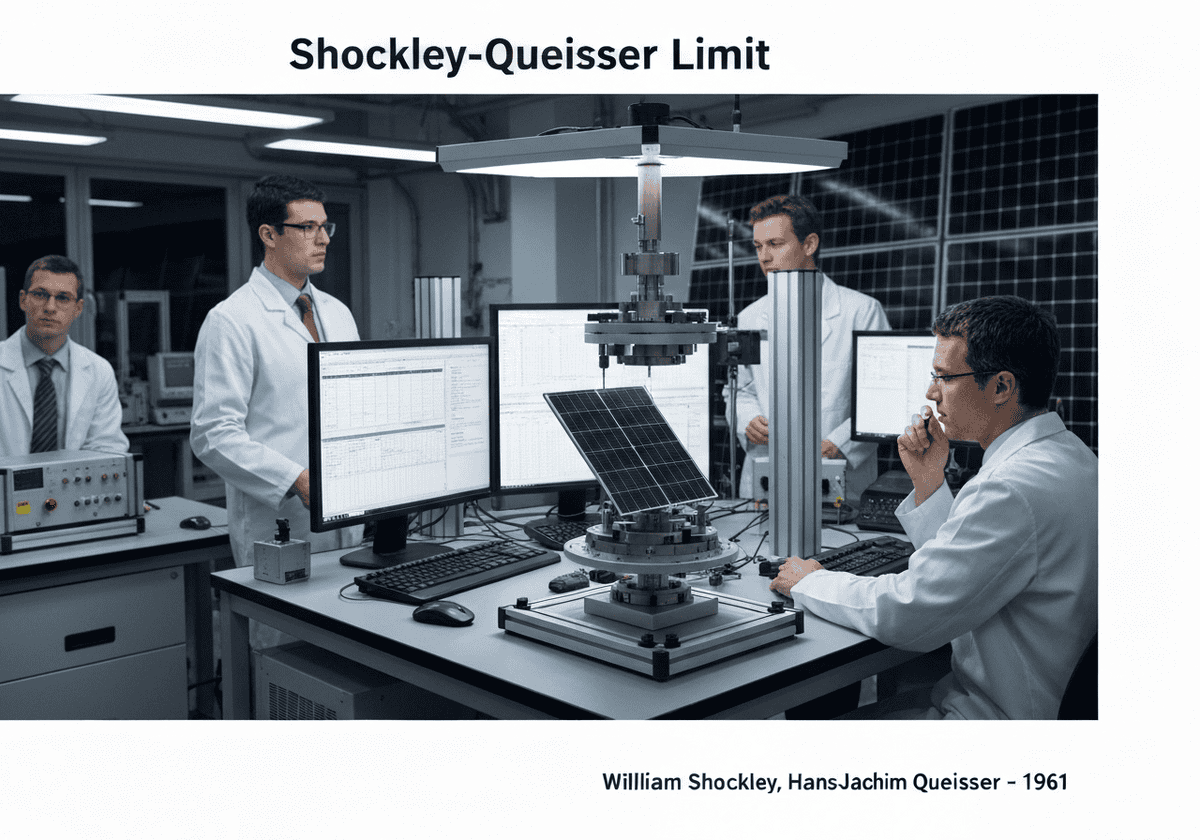肖克利-奎瑟极限是单pn结太阳能电池的最大理论效率。它仅考虑辐射复合和黑体辐射损耗。对于在标准太阳辐射(AM1.5G)下,最佳带隙为1.34 eV的单结电池,其最大效率约为33.7%。这一基本极限指导着太阳能电池的研究和设计。


(generate image for illustration only)
肖克利-奎瑟极限是单pn结太阳能电池的最大理论效率。它仅考虑辐射复合和黑体辐射损耗。对于在标准太阳辐射(AM1.5G)下,最佳带隙为1.34 eV的单结电池,其最大效率约为33.7%。这一基本极限指导着太阳能电池的研究和设计。
The Shockley–Queisser (SQ) limit, also known as the detailed balance limit, provides a foundational ceiling on the energy conversion efficiency of solar cells. It is derived by analyzing the 热力学 balance between the energy absorbed from the sun and the energy lost by the cell. The model makes several key assumptions: the cell is a single p-n junction, it operates at a standard temperature (300 K), and it is illuminated by unconcentrated sunlight (AM1.5G spectrum).
The calculation accounts for several unavoidable loss mechanisms. First, photons with energy less than the semiconductor’s bandgap ([latex]E_g[/latex]) pass through the cell without being absorbed, contributing nothing to the current. Second, for photons with energy greater than the bandgap, the excess energy ([latex]E_{photon} – E_g[/latex]) is quickly lost as heat through thermalization, as the excited electron relaxes to the bottom of the conduction band. The voltage is thus limited by the bandgap, not the photon energy. The most significant loss mechanism considered in the SQ limit is radiative recombination. This is the reverse process of absorption, where an electron and hole recombine and emit a photon. In an ideal cell, this is the only recombination pathway. The cell, being at a non-zero temperature, also radiates energy as a black body.
By balancing the incoming photon flux from the sun with the outgoing flux from radiative recombination and black-body radiation, Shockley and Queisser derived the current-voltage characteristic of an ideal cell. The maximum power point on this curve defines the maximum efficiency. The efficiency is a strong function of the bandgap energy, peaking at ~33.7% for a bandgap of 1.34 eV, which is close to that of Gallium Arsenide (GaAs). For silicon ([latex]E_g \approx 1.12[/latex] eV), the limit is around 32%.
迎接新挑战
机械工程师、项目、工艺工程师或研发经理
可在短时间内接受新的挑战。
通过 LinkedIn 联系我
塑料金属电子集成、成本设计、GMP、人体工程学、中高容量设备和耗材、精益制造、受监管行业、CE 和 FDA、CAD、Solidworks、精益西格玛黑带、医疗 ISO 13485
肖克利-奎塞尔极限
(如果日期不详或不相关,例如 "流体力学",则对其显著出现的时间作了四舍五入的估计)。
相关发明、创新和技术原理
{{标题}}
{%,如果摘录 %}{{ 摘录 | truncatewords:55 }}
{% endif %}